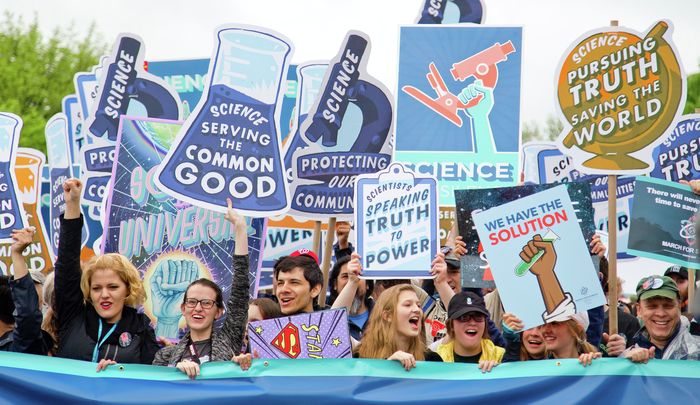Varsity Explains: The chemistry of chemistry, the science of love
In this Valentine’s Day edition of Varsity Explains, Fatima Eshani explains the molecular processes behind what we experience as ‘love’, and discusses what actually drives behaviours of lust and affection.

The world we see around us is only an approximation: our brains’ best guesses as to what is happening in our surroundings. Our experiences, thoughts, and feelings can all be chalked down to molecules and electrical signals in our heads. So, in the words of the great scientist Haddaway, Varsity poses the question: what is love?
Love can be thought of as comprising three stages: sexual attraction, romantic attraction, and attachment. While there is certainly overlap between stages, individual chemical messengers have been mapped out as occurring in significantly larger quantities during some stages than others.
Sexual attraction, or lust, is the product of the hormones testosterone and oestrogen. Contrary to popular belief, both are found in men and women. The hypothalamus in the brain is responsible for stimulating the release of these hormones via what is known as the hypothalamic pituitary gonadal axis. While oestrogen plays a role in arousal – for example, women have increased libido in the period surrounding ovulation, when oestrogen is at peak levels – testosterone is the main driver of lust. In general, men have seven to eight times more testosterone than women, typically resulting in an increased sex drive. Studies have shown that men may subconsciously detect when women are ovulating (due to changing body scent and other indicators), making them sexually attracted to someone they perhaps might not have been otherwise. Women with increased testosterone are also thought to have a greater sex drive than women with lower levels. One possible cause for this is PCOS (polycystic ovary syndrome), affecting roughly 10% of all women.
“Romantic attraction can occur without lust, and vice versa – the important distinction is the triggering of reward-based behaviours i.e., the chase”
Romantic attraction can occur without lust, and vice versa – the important distinction is the triggering of reward-based behaviours i.e., the chase. The reward system pathway, which involves the hypothalamus and other important brain structures, is responsible for those obsessive thoughts and feelings. When romantic attraction is felt, the reward centre of the brain is stimulated, resulting in dopamine release. Noradrenaline, a ‘fight-or-flight’ neurotransmitter that often behaves as a hormone, is also elevated during this stage. The ‘honeymoon phase’ and its associated euphoria at the start of a relationship can be attributed to dopamine. Perhaps surprisingly, increased levels of dopamine are also associated with behaviours such as cocaine use; the high associated with increased dopamine makes romantic attraction somewhat akin to the process of becoming slowly addicted to someone.
“The high associated with increased dopamine makes romantic attraction somewhat akin to the process of becoming slowly addicted to someone”
Interestingly, studies show that dopamine is elevated when one is anticipating a reward; levels actually peak when uncertainty is at its highest. This explains why dating people who give mixed signals may be so addictive, despite us knowing better. It follows that lower levels of dopamine may be to blame for the loss of the spark in long-term relationships where the anticipation is gone.
Lastly, attachment is felt in both long-term relationships and friendships, and is thought to be mediated by the ‘cuddle’ hormone oxytocin and antidiuretic hormone (ADH), both produced by the hypothalamus in the brain. That warm feeling of security when you see someone you are attached to? All the work of oxytocin. Oxytocin is released in response to a plethora of triggers, from platonic hugs to physical intimacy – it is even released during childbirth. Studies show that oxytocin increases fidelity and may cause men in monogamous relationships to socially distance themselves from other attractive females. Oxytocin is thought to facilitate bonding and love in individuals, and ultimately, this attachment is what is thought to keep long-term relationships alive, perhaps even longer than is healthy. Feelings of attachment may supersede the human instinct to find a more compatible mate.
All of this, of course, is dependent on your perception of the person you love. This can be illustrated by the principle of top-down processing. For example, studies on human vision show that vision can be penetrated by prior information from the brain to modulate what we see. For example, muffins are seen as being larger to those on a diet and figures can take on more frightening interpretations when listening to scary music. Isolation can make people seem closer in distance and make the lightness of a smiling face seem brighter. Theories of top-down processing suggest that the raw information our eyes gather is intercepted by past experiences and emotions from the brain. This modifies what you actually see based on what was useful to see in the past. It is possible to argue, therefore, that the loved one you see before you is not actually who you think they are, but rather a formulation based on what is beneficial for you to see – a explanation, perhaps, for the ‘inertia’ some people feel before ending a relationship.
For those currently in love, it is a beautiful and complex system involving many brain areas which have power to make physical changes in our bodies. For those currently experiencing heartbreak, it is all just molecules. 'I love you from the bottom of my hypothalamus' – why not opt for a more neuroanatomically correct expression this Valentine's day?
 Features / Should I stay or should I go? Cambridge students and alumni reflect on how their memories stay with them15 December 2025
Features / Should I stay or should I go? Cambridge students and alumni reflect on how their memories stay with them15 December 2025 News / Cambridge study finds students learn better with notes than AI13 December 2025
News / Cambridge study finds students learn better with notes than AI13 December 2025 Comment / The magic of an eight-week term15 December 2025
Comment / The magic of an eight-week term15 December 2025 News / News In Brief: Michaelmas marriages, monogamous mammals, and messaging manipulation15 December 2025
News / News In Brief: Michaelmas marriages, monogamous mammals, and messaging manipulation15 December 2025 News / Dons warn PM about Vet School closure16 December 2025
News / Dons warn PM about Vet School closure16 December 2025









